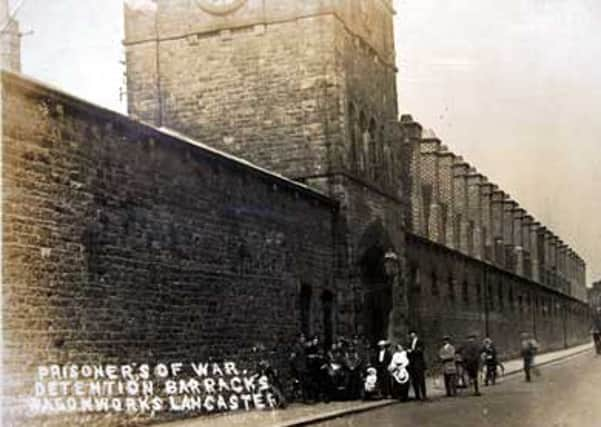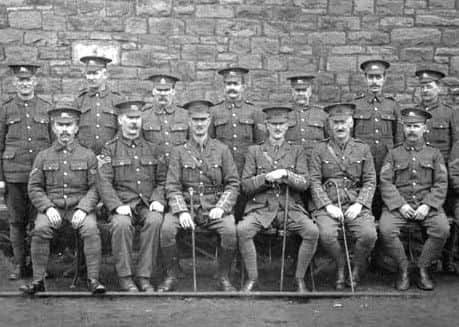Lancaster nostalgia: a war link to Standfast and Barracks


What is now the Standfast & Barracks fabric printing company in Caton Road once housed soldiers and prisoners during the First World War.
This and other fascinating aspects of the building have inspired the first project by Mirador, a Lancaster-based arts and heritage company.
Advertisement
Hide AdAdvertisement
Hide AdAnd on November 26, visitors have a unique chance to tour inside the Standfast & Barracks building and see the Behind The Wall project underway during an open day.


Free tours of the factory, where raw cloth is transformed into stunning designer fabric, take place from 10.30am-3pm and must be booked in advance by emailing george@miradorarts.co.uk
There will also be a mini-exhibition of work by the Behind The Wall artists, the company’s current designs and products plus an historical display reflecting wartime history.
When the First World War began, the Caton Road building was a disused wagon works which became a barracks for soldiers. One of the most poignant pieces of film from this time shows them marching down Caton Road towards Lancaster Railway Station to embark on a journey to the trenches.
Advertisement
Hide AdAdvertisement
Hide AdAfter the soldiers left, the building was put to another important wartime use - as an internment camp.


The Lancaster Guardian of August 1914 reports on the building being prepared for the reception of German prisoners – those who had been detained by the authorities and not allowed to return to Germany.
“A company of the 3rd Battalion Royal Welsh Fusiliers (Special Reserves) arrived to take charge of the prisoners. Barbed wire has been freely used around the walls of the building, and the railway enables trains to go straight to the works.”
In a further report entitled ‘Alien Prisoners in Lancaster’, the paper announced the arrival of the first German and Austrian prisoners.
Advertisement
Hide AdAdvertisement
Hide Ad“Further batches of prisoners have been brought during the week, a delivery of 100 men bringing up the total under detention to about 380.
“Many of them are seamen, who have been unable to return to their own countries. The strictest precautions are taken to prevent escape or communication with the outside world.”
Among the guards was author, Robert Graves who wrote about his experiences there in his autobiography Goodbye To All That.
He described the camp as a dirty, draughty place, littered with old scrap metal and guarded by high barbed-wire fences.
Advertisement
Hide AdAdvertisement
Hide AdBy the time Graves arrived, the camp was already home to 3,000 prisoners with more crowding in daily including seamen arrested on German vessels in Liverpool, waiters from large Northern hotels, an odd German band or two, harmless Germen commercial travellers and shopkeepers.
“The prisoners resented being interned, particularly family men who had lived at peace in England for many years.
“The one comfort we could offer them was: ‘You are safer inside than out.’ For anti-German feeling had begun to run high,” he wrote.
The local community did rally round to support the soldiers at the camp though. The Lancaster Guardian launched a Christmas appeal encouraging readers to send in knitwear and Christmas puddings.
Advertisement
Hide AdAdvertisement
Hide AdIt was planned to present a piano to relieve the monotony of their duties.
Other evidence of entertainment at the camp includes news reports of German prisoners of war in Lancaster being keen on dancing and having a German band playing music.
There was a temporary theatre too with entertainment by prisoner-artistes including acrobatic troupes, jugglers and comedians.
Prisonwers of war also helped relieve boredom by carving bones and Lancaster City Museum has two.
Advertisement
Hide AdAdvertisement
Hide AdOne of them reads 1914 Lancaster 1915 and features a rose on one side. It is thought to be one of the earliest carved POW bones from the First World War.
The Caton Road internment camp remained until about 1916 when prisoners were moved to another camp at Lancaster Castle where among the inmates was Joseph Pilates who is thought to have invented his famous form of exercise while confined there.
If you would like to know more about the history of the Standfast & Barracks site and the Behind The Wall project, go along to the open day and visit the website www.miradorarts.co.uk.